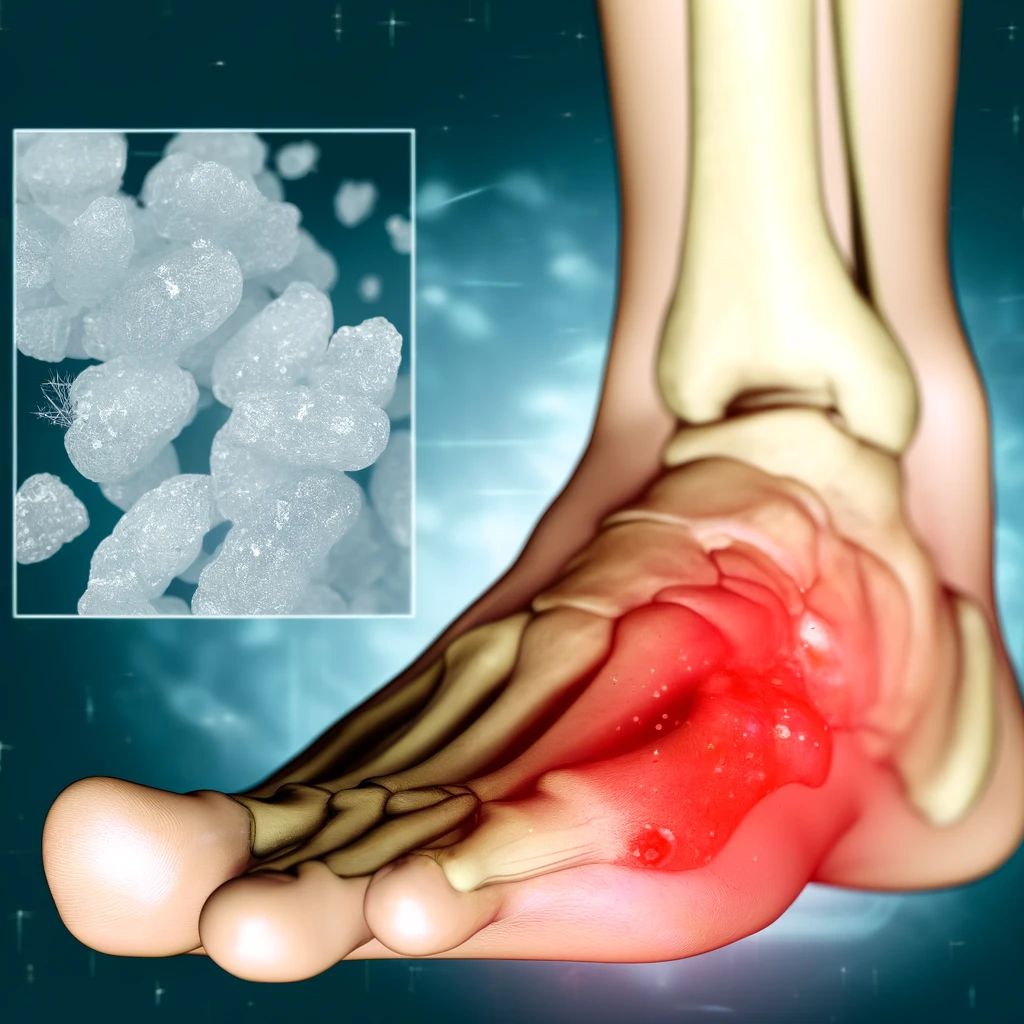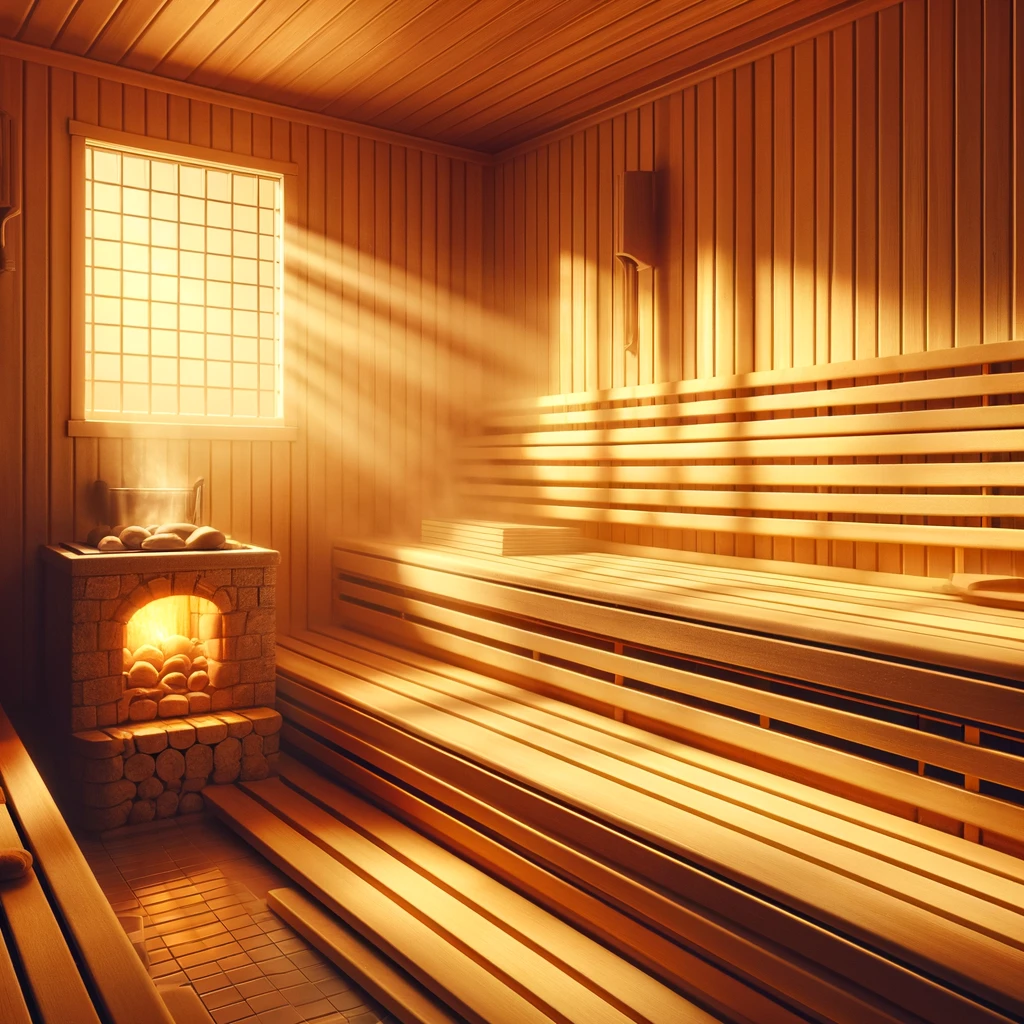Is sauna good for gout? – 4 important information. Gout, a form of inflammatory arthritis, has plagued humanity for centuries, earning it the moniker “the disease of kings.” Characterized by sudden and severe joint pain, particularly in the big toe, gout arises from the accumulation of urate crystals in the joints. It affects millions worldwide, with its prevalence steadily rising due to factors like diet, lifestyle, and an aging population.
In contrast, sauna therapy, a practice with roots tracing back to ancient civilizations like the Finns and the Romans, involves exposing oneself to elevated temperatures in a controlled environment. Whether in a traditional dry sauna, a steam room, or an infrared sauna, the experience induces sweating and purportedly offers a myriad of health benefits, from detoxification to relaxation.
The purpose of this article is to delve into the question: Is sauna use advantageous or disadvantageous for those grappling with gout? While saunas have gained popularity for their potential therapeutic effects, particularly in promoting cardiovascular health and easing muscle tension, their impact on conditions like gout remains uncertain. Through an exploration of scientific research, expert opinions, and anecdotal accounts, we aim to shed light on whether sauna therapy holds promise as a complementary approach in managing gout or if it poses risks that individuals with this condition should heed.
See also: Bunions and running – 10 important information
Understanding Gout
Gout is a type of arthritis characterized by sudden and intense pain, swelling, and stiffness in the joints, typically affecting the big toe. It occurs when there is an accumulation of urate crystals in the joints, leading to inflammation and discomfort. Urate crystals form when there is an excess of uric acid in the bloodstream, a condition known as hyperuricemia. While not everyone with hyperuricemia develops gout, it is a significant risk factor for the disease.
The primary causes of gout include:
- Dietary Factors: Consuming foods high in purines, such as red meat, seafood, and alcohol, can elevate uric acid levels in the body and trigger gout attacks.
- Genetics: Some individuals have a genetic predisposition to gout, making them more susceptible to developing the condition, even with normal uric acid levels.
- Medical Conditions: Certain medical conditions, such as obesity, hypertension, diabetes, and kidney disease, can increase the risk of developing gout.
- Medications: Certain medications, including diuretics and low-dose aspirin, can interfere with uric acid excretion, contributing to the development of gout.
Symptoms and Common Triggers
Gout attacks typically manifest suddenly, often at night, and can be excruciatingly painful. Common symptoms of a gout flare-up include:
- Intense pain in the affected joint(s), most commonly the big toe, but also the ankles, knees, elbows, wrists, or fingers.
- Swelling, redness, and warmth in the affected area.
- Limited range of motion in the joint due to pain and inflammation.
- Tenderness to the touch.
Gout attacks can be triggered by various factors, including:
- Dietary Choices: Consuming foods high in purines, such as organ meats, shellfish, and sugary beverages, can increase uric acid levels and trigger gout attacks.
- Alcohol Consumption: Beer and spirits, particularly when consumed in excess, have been linked to an increased risk of gout attacks.
- Dehydration: Inadequate hydration can lead to higher concentrations of uric acid in the bloodstream, increasing the likelihood of gout flare-ups.
- Stress and Fatigue: Emotional stress and physical fatigue can weaken the body’s defenses and trigger gout attacks in susceptible individuals.
Importance of Managing Gout
Managing gout is crucial to prevent recurrent flare-ups and complications associated with the condition. Untreated or poorly managed gout can lead to:
- Chronic joint inflammation and damage.
- Formation of tophi, which are lumps of urate crystals that can develop under the skin and in the joints.
- Kidney stones and kidney damage due to the accumulation of urate crystals in the kidneys.
By adopting lifestyle modifications, such as maintaining a healthy diet, staying hydrated, managing stress, and avoiding trigger foods and beverages, individuals with gout can reduce the frequency and severity of flare-ups. Additionally, medications such as nonsteroidal anti-inflammatory drugs (NSAIDs), colchicine, and urate-lowering agents may be prescribed to help control symptoms and prevent complications.
In summary, effective management of gout requires a multifaceted approach that addresses dietary habits, lifestyle factors, and medical interventions to minimize the impact of the disease on daily life and overall health.

Sauna Therapy: An Overview
Sauna therapy, also known as sauna bathing or sauna bathing, has been practiced for centuries in various cultures around the world. The origins of sauna use can be traced back to Finland, where it holds significant cultural and social importance. Finnish saunas, known as “savusaunas” or “smoke saunas,” were traditionally heated by burning wood and producing smoke, which was then ventilated out before people entered.
Over time, sauna technology evolved, leading to the development of different types of saunas, including dry saunas, steam saunas, and infrared saunas. Today, sauna therapy is enjoyed for its relaxation and potential health benefits in many countries across the globe.
Mechanics of Sauna Therapy and Effects on the Body
Saunas work by exposing the body to elevated temperatures in a controlled environment, typically ranging from 70°C to 100°C (158°F to 212°F) in traditional saunas and up to 60°C (140°F) in infrared saunas. The heat causes the body to sweat profusely, which helps to eliminate toxins and waste products through the skin.
The physiological effects of sauna therapy on the body include:
- Increased Circulation: The heat from the sauna causes blood vessels near the skin’s surface to dilate, promoting better blood flow and circulation throughout the body. This increased circulation can help deliver oxygen and nutrients to tissues while aiding in the removal of metabolic waste products.
- Detoxification: Sweating induced by sauna therapy facilitates the elimination of toxins and impurities from the body through the skin. This process may help cleanse the body of heavy metals, pollutants, and other harmful substances, although the extent of detoxification through sweating is debated among experts.
- Relaxation and Stress Reduction: Sauna therapy promotes relaxation by stimulating the release of endorphins, the body’s natural feel-good hormones. The soothing heat and quiet environment of saunas provide a tranquil setting for stress relief and mental relaxation.
- Muscle Relaxation: The heat from saunas helps to relax muscles and alleviate tension, making sauna therapy a popular choice for athletes, individuals with chronic pain conditions, and those seeking relief from muscular discomfort.
- Immune System Support: Some research suggests that regular sauna bathing may enhance immune function by increasing white blood cell production and improving the body’s ability to fight off infections.
Types of Saunas
- Traditional Dry Saunas: These saunas use heated rocks or electric heaters to raise the air temperature, creating a dry heat environment. Users can control the humidity by adding water to the rocks, generating steam if desired. Traditional saunas typically operate at higher temperatures than other types of saunas and are often found in gym facilities, spas, and wellness centers.
- Steam Saunas: Also known as steam rooms or Turkish baths, steam saunas use a steam generator to produce moist heat, resulting in high humidity levels (usually around 100%). The warm, humid air in steam saunas can help open the pores, cleanse the skin, and promote relaxation.
- Infrared Saunas: Infrared saunas use infrared heaters to emit radiant heat that is absorbed directly by the body’s surface, rather than heating the air in the sauna chamber. This type of sauna produces a gentler heat that penetrates deeper into the skin, promoting detoxification, relaxation, and pain relief. Infrared saunas are often favored by individuals who find traditional saunas too hot or uncomfortable.
Each type of sauna offers unique benefits and experiences, allowing individuals to choose the option that best suits their preferences and health goals. Whether opting for a traditional dry sauna, a steam sauna, or an infrared sauna, regular sauna therapy can be a rejuvenating and health-enhancing practice for many people.
See also: Things to fast from besides food – 4 great tips
Potential Benefits of Sauna for Gout
Sauna therapy has gained attention for its potential benefits in managing various health conditions, including arthritis and inflammatory disorders like gout. While scientific research on the specific effects of sauna therapy on gout is limited, there is growing evidence to suggest that sauna use may offer several advantages for individuals with this condition.
1. Alleviation of Gout Symptoms
Several studies have investigated the effects of sauna therapy on pain and inflammation, which are hallmark symptoms of gout. While most of these studies have focused on other types of arthritis, such as rheumatoid arthritis and osteoarthritis, their findings may have implications for individuals with gout.
- Pain Reduction: Heat therapy, including sauna use, has been shown to provide pain relief for individuals with arthritis by promoting muscle relaxation and improving joint mobility. Sauna-induced heat may help soothe gout-related joint pain and discomfort, providing temporary relief during flare-ups.
- Inflammation Reduction: Sauna therapy has been associated with reductions in inflammatory markers, such as C-reactive protein (CRP) and interleukin-6 (IL-6), in individuals with rheumatic diseases. While more research is needed to confirm these effects specifically for gout, sauna-induced heat may help modulate the inflammatory response and reduce joint inflammation associated with gout attacks.
2. Improved Circulation
Sauna therapy is known to increase circulation by dilating blood vessels and promoting better blood flow throughout the body. Enhanced circulation can have several benefits for individuals with gout, including:
- Increased Urate Excretion: Improved circulation may facilitate the removal of urate crystals from the joints, potentially reducing the frequency and severity of gout flare-ups.
- Enhanced Nutrient Delivery: Better blood flow can deliver oxygen and nutrients to joint tissues, promoting healing and repair processes following gout attacks.
- Toxin Elimination: Enhanced circulation may aid in the elimination of metabolic waste products and toxins from the body, potentially reducing the burden on the kidneys and liver, which play a crucial role in uric acid metabolism.
3. Relaxation and Stress Reduction
Sauna therapy is widely regarded for its relaxation benefits, helping individuals unwind and alleviate stress. Stress management is important for individuals with gout, as stress can trigger flare-ups and exacerbate symptoms. By promoting relaxation and reducing stress levels, sauna use may indirectly benefit individuals with gout by minimizing potential triggers for flare-ups.
Anecdotal Evidence and Personal Testimonials
While scientific research on the specific effects of sauna therapy on gout is still emerging, anecdotal evidence and personal testimonials from individuals with gout suggest that sauna use may offer symptomatic relief and improve overall well-being. Many individuals report experiencing reduced pain, improved mobility, and a greater sense of relaxation and comfort after sauna sessions.
While more research is needed to establish the efficacy of sauna therapy for gout definitively, preliminary evidence suggests that sauna use may offer several potential benefits for individuals with this condition. By alleviating pain and inflammation, improving circulation, and promoting relaxation, sauna therapy may serve as a complementary approach to managing gout symptoms and enhancing overall quality of life. However, individuals with gout should consult with their healthcare providers before incorporating sauna therapy into their treatment regimen to ensure it is safe and appropriate for their specific needs and health status.

Risks and Considerations
Sauna therapy can offer potential benefits for individuals with gout, but it’s essential to be aware of potential risks and considerations, particularly for those managing this condition. Here are some important points to keep in mind:
1. Dehydration and Overheating:
- Sauna sessions can lead to significant fluid loss through sweating, increasing the risk of dehydration, particularly in individuals who may already have impaired kidney function due to gout or other health conditions.
- Dehydration can exacerbate gout symptoms and may lead to complications such as kidney stones.
- Overheating in the sauna can also pose risks, especially for individuals with cardiovascular conditions or those taking medications that affect blood pressure or heart rate.
2. Medication Use and Health Conditions:
- Some medications commonly used to manage gout, such as diuretics (water pills), can further increase the risk of dehydration when combined with sauna therapy.
- Individuals with cardiovascular conditions, hypertension, or diabetes should exercise caution when using saunas, as the heat can affect blood pressure and blood sugar levels.
- Certain health conditions, such as kidney disease or liver disease, may also affect the body’s ability to regulate fluid balance and tolerate heat, increasing the risk of adverse effects from sauna use.
3. Recommendations for Safe Sauna Use:
- Stay Hydrated: Before entering the sauna, drink plenty of water to ensure proper hydration. During the sauna session, drink water regularly to replenish fluids lost through sweating.
- Limit Session Duration: Start with shorter sauna sessions (e.g., 10-15 minutes) and gradually increase the duration as tolerated. Avoid prolonged exposure to high temperatures, especially if you are new to sauna therapy or have underlying health conditions.
- Listen to Your Body: Pay attention to how your body responds to sauna therapy. If you start feeling lightheaded, dizzy, or excessively fatigued, exit the sauna immediately and cool down with cold water or fresh air.
- Avoid Alcohol and Stimulants: Refrain from consuming alcohol or stimulants before or during sauna sessions, as they can exacerbate dehydration and increase the risk of adverse effects.
- Monitor Medication Use: Consult with your healthcare provider before using saunas, especially if you are taking medications for gout or other health conditions. Your doctor can provide guidance on how sauna therapy may interact with your medications and adjust your treatment plan accordingly.
While sauna therapy can offer potential benefits for individuals with gout, it’s essential to approach it with caution and awareness of potential risks. By staying hydrated, monitoring session duration, and consulting with healthcare providers, individuals with gout can safely incorporate sauna therapy into their overall management plan while minimizing the risk of adverse effects. As always, listen to your body and prioritize your health and safety when using saunas.
See also: Reishi chocholate – 7 great health benefits
Expert Insights and Research Findings
While scientific research on the specific effects of sauna therapy on gout is still evolving, several studies have investigated its potential benefits for individuals with inflammatory conditions like arthritis. Here’s a summary of key findings and insights from medical professionals and researchers specializing in rheumatology and sauna therapy:
1. Pain Relief and Inflammation Reduction:
- Some studies have suggested that sauna therapy may help alleviate pain and reduce inflammation in individuals with arthritis, including gout.
- Heat therapy, such as sauna use, has been shown to promote muscle relaxation and improve joint mobility, leading to temporary relief from gout-related symptoms.
2. Improved Circulation and Joint Mobility:
- Sauna therapy is known to increase circulation by dilating blood vessels, which may facilitate the removal of urate crystals from the joints in individuals with gout.
- Enhanced circulation can also deliver oxygen and nutrients to joint tissues, promoting healing and reducing stiffness and discomfort associated with gout attacks.
3. Stress Reduction and Quality of Life:
- Sauna therapy has been associated with relaxation and stress reduction, which can have indirect benefits for individuals with gout by minimizing potential triggers for flare-ups.
- Improved relaxation and quality of life are essential components of holistic gout management and may contribute to overall well-being.
Consensus and Conflicting Evidence:
- While there is some consensus among experts that sauna therapy may offer symptomatic relief for individuals with gout, the extent of its efficacy and long-term benefits remains uncertain.
- Some studies have reported positive outcomes, such as pain reduction and improved joint function, while others have found inconclusive or conflicting results.
- More rigorous clinical trials are needed to establish the efficacy of sauna therapy specifically for gout and to determine optimal treatment protocols, including session frequency, duration, and temperature settings.
Is sauna good for gout? – Conclusion
In conclusion, the exploration of sauna therapy for gout reveals promising potential benefits but also underscores the need for caution and further research. Here are the key points discussed in the article:
- Sauna Therapy and Gout: Sauna therapy, with its ability to promote relaxation, improve circulation, and potentially reduce pain and inflammation, has garnered interest as a complementary approach for managing gout symptoms.
- Limited Scientific Evidence: While some studies suggest that sauna therapy may offer symptomatic relief for individuals with gout, the current scientific evidence is limited and inconclusive. More rigorous research is needed to establish the efficacy and safety of sauna therapy specifically for gout.
- Consideration of Risks: Sauna use carries potential risks, including dehydration, overheating, and interactions with medications. Individuals with gout should consult with their healthcare providers before incorporating sauna therapy into their treatment regimen to ensure it is safe and appropriate for their specific needs and health status.
- The Importance of Personalized Care: Gout management requires a comprehensive approach that considers individual factors such as medical history, medications, and lifestyle habits. Sauna therapy should be integrated into gout management plans thoughtfully and under the guidance of healthcare professionals.
- Call for Further Research: To fully understand the effects of sauna therapy on gout, further research is essential. Well-designed clinical trials are needed to evaluate the efficacy, optimal protocols, and long-term outcomes of sauna therapy for individuals with gout.
In light of the current gaps in scientific knowledge, individuals with gout are encouraged to approach sauna therapy with caution and to prioritize open communication with their healthcare providers. Consulting with a rheumatologist or other qualified healthcare professional can help individuals make informed decisions about incorporating sauna use into their gout management plan. As research progresses, collaborative efforts between patients, clinicians, and researchers will be instrumental in advancing our understanding of the potential role of sauna therapy in gout care.
References
Nonpharmacological Management of Gout and Hyperuricemia
Effect of sauna bathing and beer ingestion on plasma concentrations of purine bases


